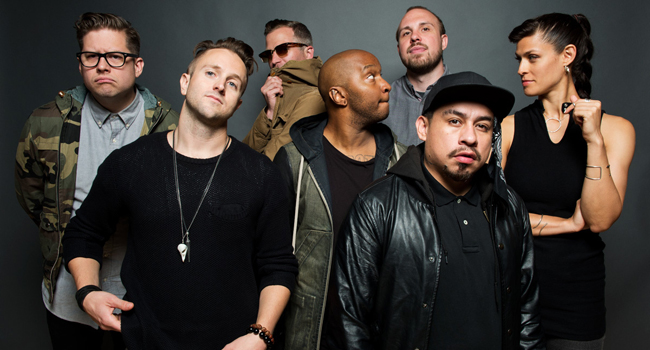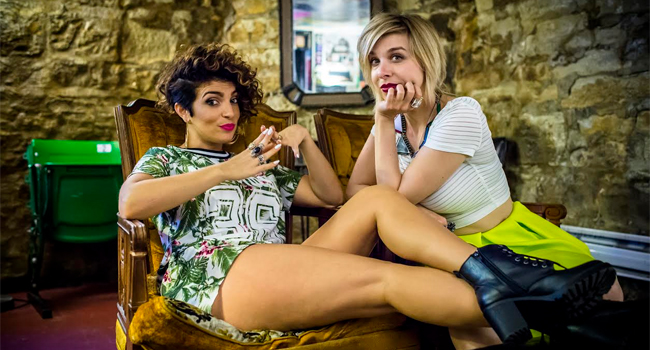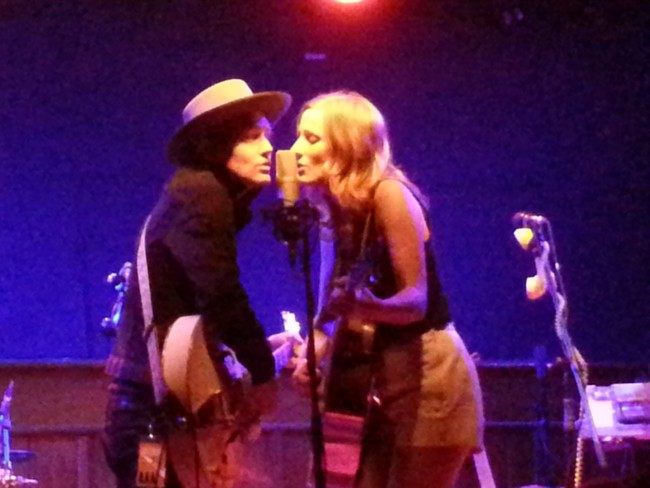 A soundtrack to the shuffle. It’s a novel idea, that is, listening to music while strolling city sidewalks, that many subscribe to via MP3. Then there’s the more communal approach heard on Chicago’s State Street. Lightscape, the illuminated, singing staffs along the street, offers everyone the chance to toddle through Chicago while backed by a beat.
A soundtrack to the shuffle. It’s a novel idea, that is, listening to music while strolling city sidewalks, that many subscribe to via MP3. Then there’s the more communal approach heard on Chicago’s State Street. Lightscape, the illuminated, singing staffs along the street, offers everyone the chance to toddle through Chicago while backed by a beat.
The thoughtful and expansive Lightscape is another one of the enjoyments provided by the Chicago Loop Alliance, which is also responsible for the stunning spring tulips planted yearly. Pop ‘stache sat down with a thick-rimmed bifocals and bow tie clad F. Phillip Barash. An employee of the Chicago Loop Alliance, Barash chooses the music for Lightscape, to discover more about the detailed installation.
Pop ’stache: Does Lightscape’s music serve the community of Chicago uniquely?
F. Philip Barash: You hear music in suburban malls, but that’s “muzak.” Like elevator music. So there’s no innovative content to their music. We’re trying to do something very different here. It’s not supposed to be bland. It’s supposed to be interesting and engaging, and enlightening. We want people to have a reaction, and ultimately an overwhelmingly positive reaction. As much as I love curating sound for it, it shouldn’t be me, it should be you.
P ’s: How does one go about choosing which songs are played through the installation?
FPB: First of all, we want this to be about Chicago. We want people to interact with this by Tweeting in suggestions or complaints (which has happened; there have been people in the past who really didn’t like Whitney Houston). But there’s not an immediate, straightforward way to crowd-source songs right now. But we do pay attention and we hope that we’ll have a chance to work with partners like we have with radio stations and the Irish Heritage Center. That will help us curate the music we play for the city.
We really envision Lightscape’s function as a community playback platform.
P ’s: How has the project been successful in providing a sense of community to the area?
FPB: I don’t know, what do you think?
P ’s: Actually, I read a Tweet from one of our editors saying she was about to have a great day since she heard “I Believe in a Thing Called Love” over “the light thingers on State Street.” I remember that week, I heard “I Believe in a Thing Called Love” at least five times.
 FPB: (Laughs) That was around Valentine’s Day! Well, we learned that it’s all about variety. I think “I Believe in a Thing Called Love” was early in our experimentation. We have a much broader selection now. And we change it up every six weeks or so. Being in the music business, you’ll never please everyone. We just want to expose people to something new or something that they already like.
FPB: (Laughs) That was around Valentine’s Day! Well, we learned that it’s all about variety. I think “I Believe in a Thing Called Love” was early in our experimentation. We have a much broader selection now. And we change it up every six weeks or so. Being in the music business, you’ll never please everyone. We just want to expose people to something new or something that they already like.
P ‘s: When I was walking down State Street to meet you, I heard a song on the west side of the street and a poetry reading on the east side of the street. Can you explain what’s happening with Lightscape currently?
FPB: It’s a little-known fact that Chicago is a poetry town, so we worked with the Poetry Foundation on celebrating the hundredth anniversary of publishing our first poetry magazine. They have an amazing archive of spoken word, so we pulled 40 poems from their archive that represented the history of the publication and also something that had to do with what we call the “urban condition,” the poems that somehow represent the urban Chicago or much more tangentially or obliquely deal with being in the city. If you walk by any Lightscape cluster, you’ll hear an Ezra Pound poem that says, “the apparition of these faces in the crowd; Petals on a wet black bough.” That’s a poem about being in a train station.
P ’s: Talk about what happens the rest of the year and how the project came about.
FPB: When you walk down State Street like you just mentioned, you’re hearing the sounds of Lightscape (officially titled Lightscape: A Multi-Sensory Experience on State Street). The Chicago Loop Alliance created this whole Lightscape installation back in November of 2011. Initially we were thinking of ways to replace traditional tree lights for Christmas, which are really expensive and extremely unsustainable. Every year we have to cut them down and hurt the trees, so we were looking for a solution to the Christmas lights.
After talking to a bunch of brilliant architects and designers, we came up with this concept of these gently moving tall prairie grasses. That’s what Lightscape is meant to resemble. They’re completely custom-made, so there’s not another Lightscape anywhere else in the world.
It was crafted by a local architect out of spun fiberglass and LED lights. It’s equal to saving enough energy to power sixty-five homes per year. But while the project was in development, one of our board members from Broadway in Chicago suggested that since we already have lights and power, why not have music? We were like, “a thousand times yes, that’s brilliant.” So when the installation premiered last November and Mayor Rahm Emanuel flipped the switch on it, the sounds of Frank Sinatra’s “Chicago” choreographed to lights flowed out. That’s the story of how it came about. And now, I really appreciate what’s happening with this project, what it’s doing for the urban fabric and what it potentially can do for the music scene here.
P ’s: You said Lightscape is supposed to represent reeds moving in a field. What does this mean?
FPB: Chicago is the Paris on the Prairie. We’re surrounded by vast Midwestern prairie, so in a way, those kinds of tall cattails are part of our heritage.
P ’s: What’s next for the project?
FPB: Just earlier this month, we added six additional installations, bringing the total to 18. We updated the sound system. We’re going to actively pursue partnerships with labels, music venues and performers to create programming for it, and Christmas is coming up!
P ’s: So Lightscape won’t be coming down anytime soon?
FPB: It’s a major infrastructural project, so to install these programs is a costly and long-term thing. We expect these to be up for at least another five years. You’re stuck with it!
http://vimeo.com/32301786




